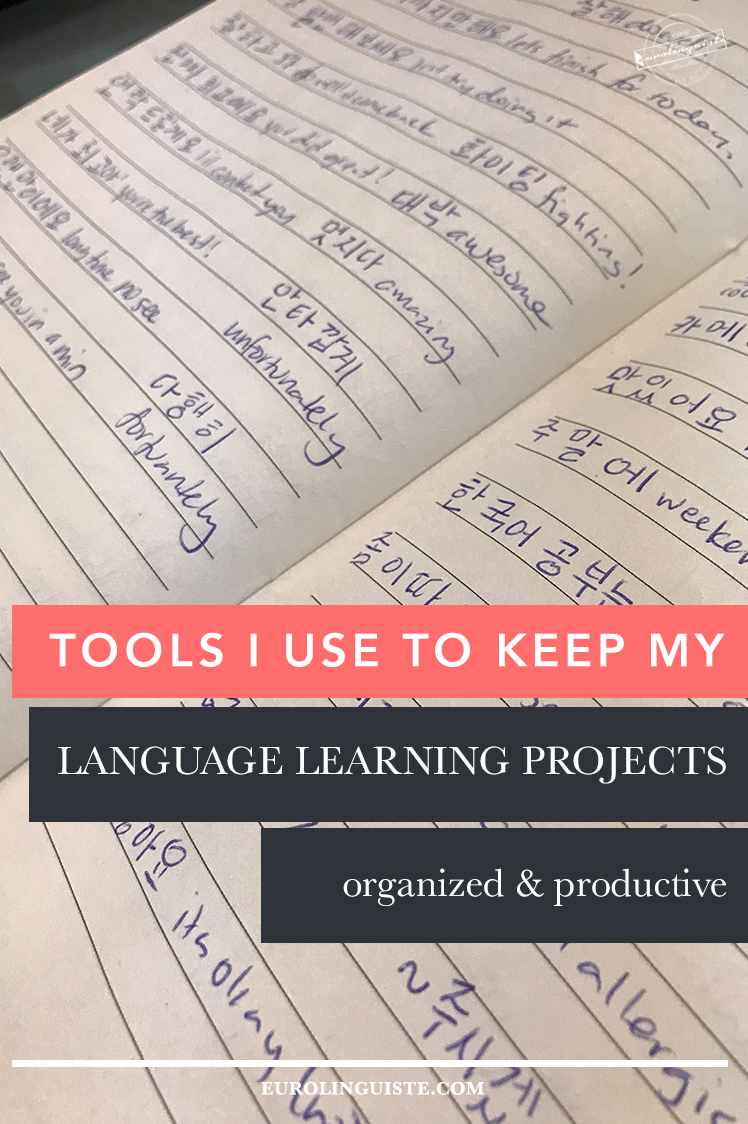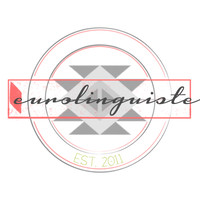The Top 5 Tools I Use to Keep My Language Projects and Resources Organized

My name is Shannon Kennedy and I'm the language lover,…
When I first started studying languages on my own, I was constantly distracted by the next, new, shiny thing. I’d purchase a coursebook, start to work through it and then stumble across a web-based language learning tool. Immediately, my attention would shift and I’d dive into the new resource, abandoning the first.
Eventually, I’d reach the stage where the material grew challenging. I, of course, would let it intimidate me. So again, I’d set the resource aside and look for something new and fun – something that didn’t take the same effort as the resource I had been using.
The result?
I’d try out a bunch of interesting and diverse resources, but I’d never make it very far with the languages that I was learning. While it was enjoyable – I do like the process of language learning – it didn’t align with my goals. I wanted to get to a decent level with the languages I was learning, so something needed to change. And fast.
I decided to change the way that I approached language learning and I’m extremely happy with the result. I went from an unfocused language dabbler to someone with conversational abilities in several languages. Creating an organized language learning system helped me become a more productive language learner.
How I Organize My Language Studies
Recently, I’ve shared a bit about my efforts to minimize and better organize my language learning routine and resources. And I’ve discovered that setting up a system in advance (rather than figuring it out as I went) helped me to make better use of both my materials and routines. Being organized made me much more efficient as a language learner.
How do I organize my language learning materials?
I use a combination of physical and digital resources to keep track of everything. And while what I do may vary slightly from language to language, these are the tools that I use consistently and without fail to help keep my language learning organized.
A Notebook

This is the most important tool that I use. I keep a notebook for each language that I study. In it, I:
- Jot down any phrases or vocabulary words that I think might be useful
- Try out different exercises from the materials I’m working with
- Store my scripts for conversations or videos
- Note any questions that I have as I work through new resources
By doing this, I not only have a single place where all of my questions and notes are stored, but I also have proof of my progress in the language.
If I ever feel stuck, or that I’m not making any progress, reviewing my notes is an easy way to see just how far I’ve come in the language. When you look back at your past notes, it’s easy to see how much of what you didn’t know in the past is something that you now know well.
When I get to the end of a notebook, the first thing I do is I distill the material in it. In the past, I would copy over any words or phrases that I felt were still relevant into a new notebook. This meant that I would skip over words I was comfortable with and those that I no longer considered important. Today, I copy those words directly into Memrise where I can then focus on studying them and remembering them.
Memrise

Memrise is a web and application-based study tool. It’s where I study vocabulary and I find that it’s spaced-repetition software extremely helpful to my learning. I use both pre-generated material (Memrise has several great language courses that they created) and my own flashcard decks. The software tells me when and what I need to review, so all I need to do is use the app each day.
Evernote
Evernote is my digital notebook. If I’m out and about and don’t have a notebook with me, Evernote is where I store my language notes. It’s also where I store my ideas for blog posts here on Eurolinguiste! Using Evernote, I can create voice memos, video memos or written memos and I can even email documents to my tutors or exchange partners through the application.
Teuxdeux
Teuxdeux is a very simple and intuitive to-do application that allows you to create and modify a daily list. It gives you a five-day view and allows to you can move items around and jump ahead to assign future tasks. In my opinion, however, the best part is that it automatically transfers unfinished tasks to the next day.
In it, I write down what language activities I have going on – my lessons, my exchanges, what specific study task I’d like to do that day, and recurring to-do’s for study habits I’m still refining.
Teuxdeux also gives you a panel at the bottom called “someday” for those tasks you need to complete, but you just don’t know when you’ll get around to them. Teuxdeux was free when I started using it, but they now charge either a subscription fee.
Asana

Asana is a project management tool and it’s where I store three things:
- What I am currently working on // I list the resources that I am currently working with and the links (if needed) to one card on my Asana Kanban board so that I always know where I’ve left off.
- What I want to work on // So that I don’t spread myself across too many different resources, I save other tools I’d like to study with in a checklist on Asana.
- My shared Google Docs with my tutors // Many of my tutors use Google Docs for our lessons. So that I can quickly find the documents for our lessons, I store the links in Asana.
Asana is incredibly user-friendly and I’m able to see what I’m working on at a glance. It also allows me to see which resources I’ve used (very useful for online resources which are easy to lose track of). I can also sort my languages by priority easily (just drag and drop), so whatever is most important is within easy reach.
To Sum Up
Having a way to stay on top of what’s next for me in language learning is important to making forward progress. It took me some time to settle on a system that works for me, and I will likely continue to refine it to work even better. Keeping all of my notes and resources organized allows me to work through them systematically. That way, I don’t keep repeating the same material over and over again with different tools. Instead, I can be more selective and better diversify my learning experience.
What are some different tools you use to keep organized?
I’d love to hear about them in the comments.
If you’ve enjoyed this post, you can check out my language learning resources page to learn more about the different tools that I use to learn languages.
For more language learning tips like this, check out my collection of articles on Pinterest!
My name is Shannon Kennedy and I'm the language lover, traveler, and foodie behind Eurolinguiste. I'm also the Head Coach of the Fluent in 3 Months Bootcamp, co-founder of Women in Language, and former Resident Polyglot at Drops.




